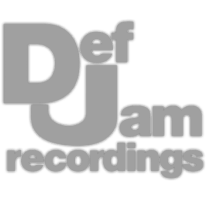Professional Analog Mastering.
Professional Analog Mastering.










Logic Pro X offers enough stock plugins to create a full vocal chain - including a gate, vocal tuner, EQ, de-esser, compressor, and exciter, all of which can be used in order. You can also utilize delay, their convolution and algorithmic reverbs, and modulation effects like a chorus.
The chapters in the video are in order - also, we’ll be listening to each step along the way.
Whether or not you use a gate is up to you, some engineers like them on vocals and some don’t - to cover all bases let’s take a look. A noise gate works well at the beginning of a vocal chain, with a moderate threshold, quick attack, and lookahead.
With Logic’s gate, we can also isolate the gating to the high frequencies so let’s do that as well.
Let’s take a listen to how it cuts out some background noise, and let me know if you use a gate when mixing vocals.
Logic’s pitch corrector is a little behind the times, but if you need to tune vocals it works well enough - first isolate the notes you want the signal to be tuned to. For natural sounding tuning, use a slower response speed, for more obvious tuning do the opposite.
I’ll take this tuner off for future demonstrations, but let’s take a listen regardless and compare slow and fast response times.
Every vocal will need to be equalized differently, but with this one, I reduce the lows with a high pass and then blended that filter in with a bell around the fundamental. These cleaned up the lows and helped reduce masking in the highs, mainly around 2kHz.
I also observed excessive harmonics around 500Hz, and 1.5kHz, so I [pulled these back slightly. Lastly, I attenuated sibilance slightly around 6.5kHz with a narrow bandwidth.
Let’s listen and notice how the vocal sounds more balanced.
Next, this vocal needed a little more control in the highs, so I used a de-esser and first switched it to absolute mode with a split range and high shelf filter. I reduced the threshold but set the range to only 2dB since the vocal’s sibilance wasn’t too aggressive.
If your vocal has more sibilance, simply alter the threshold and range. Let’s take a listen to how this subtly controls the high-frequency range.
Next, I’ll introduce compression with the intention of capturing the vocal and amplifying quieter parts. First, let’s go to the side-chain section, use RMS detection, and turn on an HP filter up to around the fundamental - then I’ll start to compress with a 3:1 ratio and moderate knee.
More importantly, I’ll set the attack to about 2ms, and release to roughly 40ms to quickly capture and release the vocal. Additionally, I’ll turn on auto-make-up gain and set it to -12dB.
Let’s listen to how this controls the vocal’s dynamics, but also increases its detail. Additionally, we’ll cycle through a couple of settings up top to hear how different emulations alter the vocal’s timbre.
I’m not a huge fan of Logic’s distortion plugins on vocals, but, I do like the sound and controls of their exciter. I like that I can increase the harmonic percentage, and mute the dry signal to hear only the distortion - additionally, I can isolate the distortion’s frequency range.
That said, let’s listen to some harmonic distortion applied above 400Hz.
The last 6 chapters are everything I want to do on the main channel strip - next, I want to set up busses or aux sends. I’ll create my first bus or send, and on the corresponding auxiliary track, I’ll insert Logic’s stereo-delay plugin, which I’ll keep synced to the BPM.
On the left channel I’ll use a 1/16th note, and on the right a dotted 1/16th note, but know you can choose different settings if you want. I’ll use about 25% feedback on both, and very mild crossed, but keep the effect at 100%.
After the delay and on this same auxiliary track, I’ll insert an EQ - this helps me shape the frequency response of my delay taps.
Lastly, I’ll blend the effect in with the channel fader.
For the next temporal or time-based effect, I’m going to create another bus and corresponding aux track - then I’ll insert Logic’s Space Designer. I’ll use their large and bright setting, but reduce the length a good amount, until it sounds in time with the tempo.
In the output EQ section, I’ll dip some lows, some high mids around 2kHz to keep this slightly dryer, and then the highs, since these made the reverb sound somewhat metallic.
Like before, I’ll blend in the effect.
Let’s listen to this short, room emulation blended in.
The room emulation was used to make the vocal slightly denser, but this following reverb will make it large and impressive. Again, I’m using a bus and aux track, but this time I’ll use Logic’s chroma verb, and select the vocal hall preset, but with a slightly longer pre-delay.
I’ll smooth the modulation setting in the details section and change the quality to ultra.
Let’s listen to this more stylized reverb blended into our vocal.
Last up for temporal effects, I’m going to use Logic’s chorus plugin - I’ll use a lower rate of modulation, about 20% intensity, and keep the mix at 100%. Like before, I’ll use the auxiliary channel strip to blend this effect in and listen closely to ensure it doesn’t cause phase cancellation.
Let’s take a listen to the subtle thickening effect that it has on the vocal.
For this last step, I’m going to change the output of my main channel strip, and all of my temporal effect auxiliary channels to a singular bus - this lets me process all of them at once. Then I’ll insert Logic’s Pultec emulation to shape the combined signal.
With the Pultec emulation, I’ll boost some of the lows, some of 2-5kHz, and dip some of 800Hz.
Let’s take a listen to the effect of this EQ. Then, let’s listen to the original vocal and our finished vocal use gain compensation to make their levels similar.